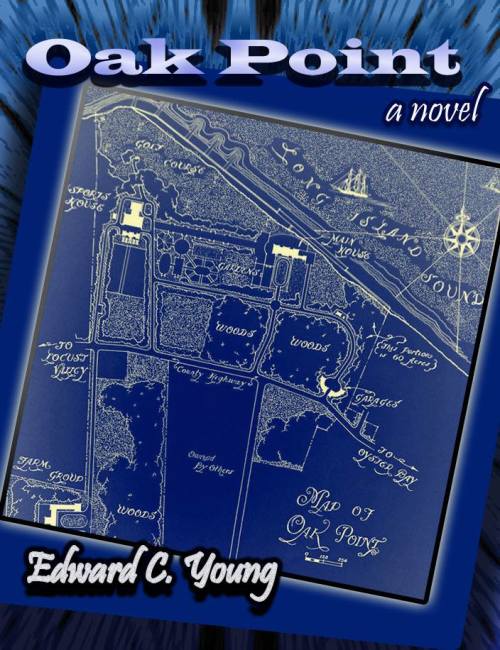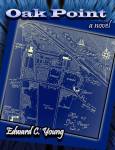The author says:
Long Island, 1969. Hendrix, incense, light machines, free love. Sophia “Taffy” Kuhn, a foxy ninth-grader, needs a boyfriend. So does her cousin and best friend, Laura “Candy” Essex. Enter Evan Charles, an eighth-grader, the last year for boys at posh Mill Hill School. He thinks Taffy and Candy are out-of-sight, and anticipates carefree years filled with girls, cars, and parties. Then his father drowns in an inch of liquid. Now he has to wing it. Next door, Countess Mona von Bismarck, a horse trainer’s daughter from Kentucky, is in a high-stakes legal battle with Evan’s refined mother, president of the planning board, over the development of Mona’s 60-acre estate, Oak Point. The village’s future is at stake. Exploring the semi-abandoned property is Evan’s dangerous pastime. When a night of romance there ends in gunfire, his luck takes an unexpected turn. Paris, 1983. Mona, dying, wants to tell all, to Evan, a fledgling writer. From stable to salon, her many loves of both sexes, and decades-long friendship with Balenciaga. The Countess gives Evan a 75-carat black opal, which allegedly has psychic powers. She used it to become the most beautiful, best-dressed and richest woman in the world. Evan has a loftier goal. Later that year, when Taffy and Candy re-enter Evan’s life, Mona’s black opal proves its worth. OAK POINT is commercial fiction. (Re-submission with tweaked cover!)
[Original submission and comments can be seen here]
Nathan says:
You took the advice on separating the byline from the title, and upping the contrast between the type and image; that’s good. But I still think that your color scheme and your chosen fonts work against you — they give no indication of the setting in time and place (which, from your description, seems like a big part of the novel) or the genre. I think this cover is going to need more than minor tweaks to serve its purpose.
What says everyone else?


Not a fan of the typography at all, nor the effects given to said text. The drop shadow is way too heavy, and the title text looks weirdly squished. Also, “a novel” seems pointless. Leave that for the product description. Further, the use of the bold version of that font for the author’s name doesn’t jive with me.
Picking better fonts and focusing on making them clear and readable and evocative of the setting and story would go a long way towards making this cover more appealing. DaFont has a whole section of “groovy” fonts that’d serve a book set in the late ’60s much better.
I wasn’t going to comment because I’m just not feeling this design. It has no hook to me and looks more like a travel guide than a novel. However, since this appears to be the design you a going with I would suggest you lose, or make less prominent, the “Map of Oak Point” text since it is redundant from with the title and is possibly unnecessary even.
I still think the cover of you book is important enough to deserve a second option created from a different angle. From the two you choose or have others choose which is best.
Based on your plot and the genre, I think this cover will go almost unnoticed. And the thumbnail? Forget about it.
That’s my take and I mean no offense and wish you the best of success.
The changes are so minimal in this version, I feel tempted to copy my earlier comments and repost them. I sense the author is trying to squeak by with minor adjustments and hope we’ll find it adequate or acceptable.
I think you need to go back to the white space on this one and start over. There wasn’t anything about the first version that any of us thought was good enough to save “as is.” Don’t take a shortcut! If you have confidence in your novel make sure the cover shows that confidence and pride and, most important, attention to detail that you want to encourage your readers to expect.
I saw the thumb and thought they had accidentally posted the same image again. I had to compare the two to figure out what the changes were.
This cover is just not at the stage where it only needs small tweaks. It needs a big overhaul. You don’t need to take every suggestion from everyone, but you need to take some of them.
You need to abandon that map. Period. As I said, you are not being remotely objective in looking at your cover. The map is only meaningful to someone already familiar with the book…which is putting the cart before the horse. And even at that, it has little or nothing to do with the actual subject of your book, beyond acting as the setting.
And, as pretty much everyone here has pointed out, the cover, as well as the font and color choices, utterly fail in conveying any sense of the period in which the book is set.
If you want to keep the map, put it inside the book. That’s been done with fantasy novels all the time.
Unfortunately, I had the exact same reaction today as when I saw the original. (Unfortunate because that reaction to the visual doesn’t attract my interest to the story.) There are so many visual possibilities to attract this audience, don’t be stubborn on an element that has very little potential. If you go with it, I hope you prove me wrong; but if in the end this cover doesn’t work, I hope you find something better before publishing. Good luck.
I wouldn’t give this book a second glance because the map tells me nothing about the story — not even a hint of the era or the genre. An archive photo or two from the time period that the story takes place in would at least convey the era. As gp said, there are many possible ways to convey what this story is about, but that map just is not doing it.
Hi:
Yes, sorry: I’m not feeling this cover at all. I wouldn’t stop and glance at it on Amazon, or on the rack, either. The blue is too oppressive, not eye-catching; the map is meaningless, at this point, as others have already pointed out. The bulky, 3D font for the title is very 60’s-70’s, and feels more like the title for a movie that requires the special glasses.
There are at least 4, possibly 5, fonts used on the cover, and to no effect; rather, they dminish the cover. You have the title font, the font for “a novel,” which is redundant and unneeded; the font used with great abandon on the map and then the author-name, which may be a bold version of the font used for “a novel,” and–they all clash.
I strongly recommend that you simply nuke it, and start over. The best article I’ve ever seen on cover design–what works and what doesn’t–is here: http://www.creativindie.com/8-cover-design-secrets-publishers-use-to-manipulate-readers-into-buying-books/ , and if you look at it, you’ll see that your cover has almost none of those attributes. It doesn’t pop, it doesn’t have space, it’s not “clever” (see their item 3), you don’t have a teaser or tagline, with regard to the fonts/effects, everyone here has already commented on those, etc. Please: read the article, scrap your existing design, and give it a fresh go.
(If you feel you must keep what you have, I’d make the map pop by using a sepia-type background for the map itself, with dark font; lose the weird blue border that looks like a tablet around it, and use a stronger, brisker, brighter blue, not the streaky blue at the top of the cover nor the black at the bottom. Then I’d look at contrasting colors for the fonts. That’s my best advice. Hope it helps.
I agree with several of the other comments here. It’s clear that the map is rather important to the story, but it should be on an inside page, not the cover. For the cover, show us the people in this novel. Evan and “Taffy” and “Candy” sound like intriguing characters, but I’m not seeing anything about them on the cover. No matter how important it may be as the setting of the story, Oak Point is merely the story’s context, not its subject. Having it as a backdrop is fine, but let’s see the subject(s) front and center, please.